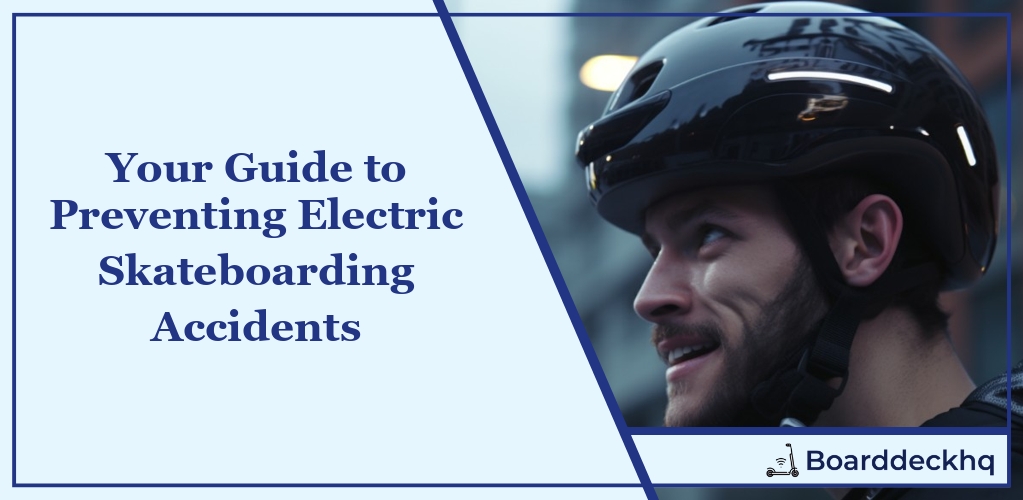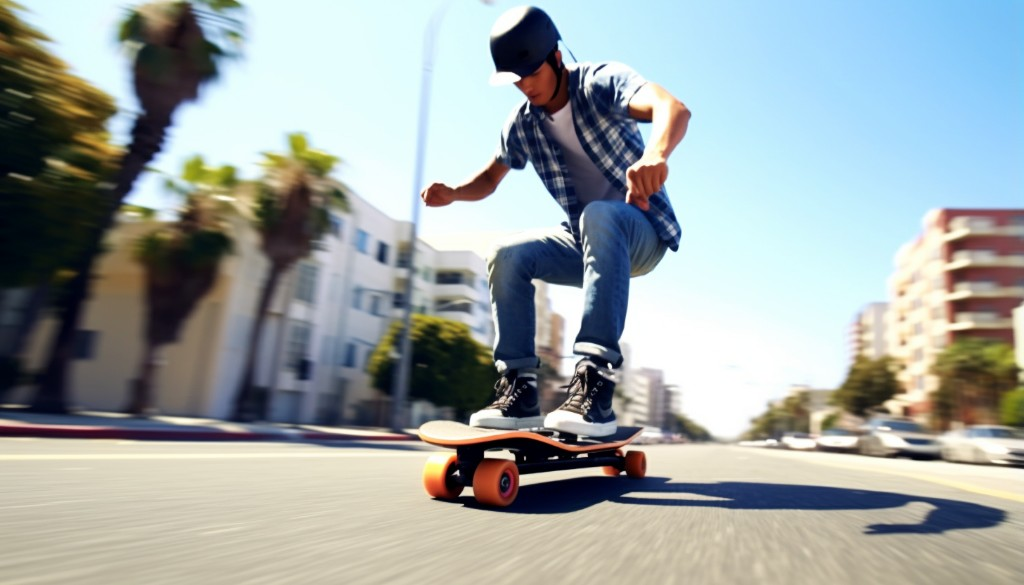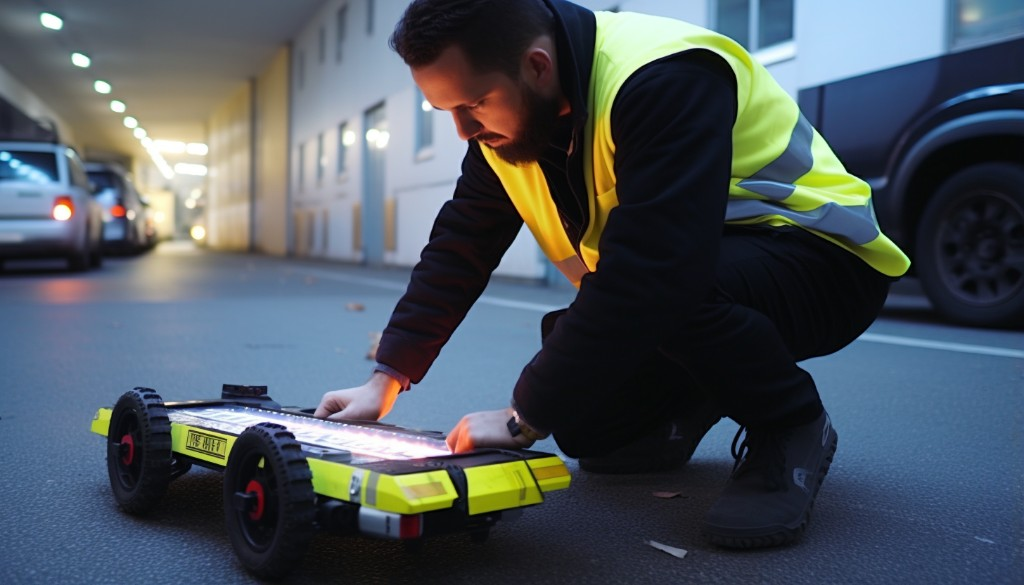Dare to defy gravity on wheels with the thrill of electric skateboarding, but beware – it’s not completely devoid of risks! This all-encompassing guide aims to arm you with crucial knowledge to prevent accidents and ensure a safer ride. Whether you’re just beginning your journey or are an experienced rider, you’ll find indispensable advice ranging from understanding the electric skateboarding basics, choosing appropriate safety gear, selecting safe riding conditions and surfaces, to boosting visibility on the road. We also touch on the importance of abiding by traffic rules, maintaining your board for optimal safety, and why continual rider training is critical. Furthermore, we delve into how to effectively navigate through potential hazards, manage emergencies, and address common concerns about electric skateboarding safety. Ready to ride smart and stay safe? Let’s dive in!
What we’ll cover:
- Electric Skateboarding Basics
- Protective Gear and Injury Prevention
- Choosing Safe Riding Conditions
- Ensuring Visibility on the Road
- Traffic Rules and Safety Laws
- Skateboard Maintenance and Safety
- Training and Practice for Riders
- Handling Potential Hazards
- Emergency Preparedness
- Understanding the Risks
Let’s jump right in, and convince you how electric skateboarding can be the thrilling yet safe adventure you’ve been looking for!
Understanding the Basics of Electric Skateboarding
Electric skateboarding can be an exhilarating experience, but it’s imperative to understand the fundamentals before hopping on. Picture this: you’re on an electric skateboard, cruising down the street, leaving everyone else for dust. But you aren’t just standing on a traditional skateboard; there are motors involved. The main components you need to familiarize yourself with include electric skateboard controls, motor control, and speed control.

Electric Skateboard Controls
The primary tool for controlling an electric skateboard is a handheld remote. Brands like Boosted Boards and Exway Flex have remotes that facilitate easy understanding of its operations. You throttle by pushing the lever on the remote, and regulate the speed according to your comfort level.
Motor Control
Motor control is the heart of riding an electric skateboard. The electric skateboard’s motor, which can range from single to dual depending upon the model, is what propels you forward. The more power you give via the controller, the faster you go.
Speed Control
Speed control can be a bit tricky when first riding an electric skateboard. It’s important to start slow and gradually increase your speed as you get more comfortable. Remember, going too fast before you’re ready can lead to accidents.
Regenerative Braking
One unique feature of electric skateboarding is a technique called regenerative braking. This method not only helps in slowing down and stopping but also charges your battery as you brake. How awesome is that?
Remote Control Use
The remote control is a vital part of electric skateboarding. Most boards come with a Bluetooth remote that sends signals to the board’s motor. Always ensure that the remote control has sufficient battery life before heading out.
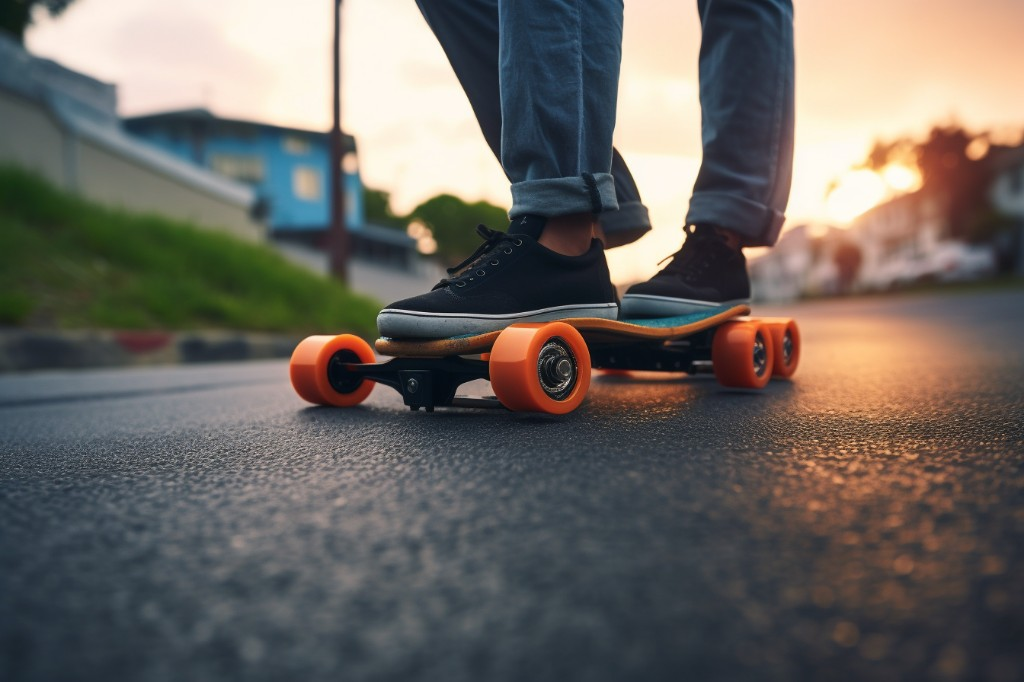
The Role of Protective Gear in Preventing Injuries
Picture yourself catching a cool breeze on an electric board. Now imagine hitting a patch of gravel and taking a nasty spill without any protective gear on. Not so cool anymore, right? That’s why it’s essential to wear protective gear when riding an electric skateboard.
Helmet Use
First and foremost, always wear a helmet. No matter how skilled you are, accidents happen, and head injuries can be severe. A good rule of thumb is: if you’re on wheels, wear a helmet.
Protective Clothing
Aside from a helmet, wearing protective clothing can also help minimize injuries when accidents happen. Long-sleeved shirts and pants can prevent road rash, while gloves can safeguard your hands. Some brands even offer padded shorts to protect your hips and tailbone.
Knee and Elbow Pads
Knee and elbow pads are another crucial part of protective gear. These pads can absorb the impact during a fall and protect your joints from injuries, saving you a trip to the hospital.
Wrist Guards
Lastly, don’t forget about wrist guards. They protect your wrists from fractures or sprains if you fall and use your hands to break the fall.
Preventing Serious Injuries on Your Skateboard
Riding an electric skateboard doesn’t have to be a risky endeavor. By taking some preventive measures, you can significantly reduce the risk of serious injuries like brain injuries and fractures. All you need to do is follow some simple safety tips for electric skateboarding and you’ll be riding with confidence in no time!
Preventing Trauma
Trauma prevention starts with wearing the right protective gear. As outlined above, helmets, knee pads, elbow pads, and protective clothing can all cushion the impact and save you from grave injuries if you are unfortunate enough to be involved in an accident.
Ankle and knee injuries are particularly common among skateboarders, so it’s important to use knee pads and ankle guards. These protective measures can drastically reduce the severity of ankle and knee injuries if you fall off your skateboard.
Wrist or shoulder injuries are another common risk associated with skateboarding, so you should consider investing in wrist guards and shoulder pads to effectively protect yourself.
Avoiding Spinal Cord and Head Injuries
The biggest concern for most skateboard riders, is head and spinal trauma following an accident. That’s why wearing an appropriate helmet is non-negotiable – it’s one of the best ways to prevent brain injuries. You may also want to consider purchasing a back protector, as these can also help prevent spinal cord injuries. With protective gear such as these, along with other factors we’re still yet to cover, you can significantly reduce the likelihood and severity of any accidents.

Selecting Safe Riding Conditions and Surfaces
Even with all the right gear and understanding of controls, staying safe while riding an electric skateboard also requires suitable conditions and surfaces.
Riding Conditions
Picking the right conditions for riding an electric skateboard is just as crucial as understanding its controls. Avoid skating in wet or icy conditions as they reduce friction on the wheels and can lead to slips and falls.
Night Riding
If you prefer riding at night, ensure you have visibility aids like lights and reflective clothing to make yourself visible to others.
Riding Surface Selection
Finally, choose your riding surface carefully. Smooth pavement is ideal for electric skateboarding. Avoid surfaces with debris or uneven terrain that could cause your board to lose control or tip over.
Remember, staying safe while riding your electric skateboard should always be top priority! Whether you’re a pro or a newbie, always prioritize safety over speed or stunts. After all, nothing beats enjoying a ride without any hiccups. So gear up, choose your path wisely, and enjoy the ride.
Enhancing Visibility and Awareness on the Road
When skateboarding, especially in areas with high traffic or complex environments, remaining aware of your surroundings plays a vital role in avoiding accidents, mishaps, and unexpected incidents when you’re navigating through roads, sidewalks, or parks.
Think about it. You’re on your board, drifting down the road. You’re in your own world, enjoying the ride. But are you really alone? The answer is a resounding no. There are cars, cyclists, pedestrians, and other skaters around you. Being aware of your surroundings helps you anticipate their actions and react accordingly.
Visibility also plays a huge role in this scenario. No matter how observant you are, if others can’t see you, the risk of accidents increases significantly. That said, let’s discuss the different visibility aids you can use for safer skateboarding.
Using Visibility Aids for Skateboarding
Visibility aids such as lights and reflective clothing can make a significant difference in your safety when skateboarding. Lights attached to your board or helmet ensure that you’re visible to others in low-light conditions. Wearing reflective gear can also alert drivers and pedestrians to your presence, which is essential to ensure you have a safe and enjoyable ride. But remember, being visible to others doesn’t replace the need to follow traffic rules and ride responsibly.
Adhering to Traffic Rules and Safety Laws
Skateboarding provides a sense of freedom, but it’s not devoid of rules. Like any other road user, skateboarders need to follow the rules to ensure safety for all. It’s not just about your safety, but also the safety of those around you.
One of the most important traffic rules is riding on the correct side of the road, in the same direction as traffic. You should also obey traffic signals and signs, just like when you’re driving or cycling.
And let’s not forget about defensive riding. This strategy helps you prepare for unpredictable situations and make safer decisions on the road. It involves paying attention to other road users, anticipating possible hazards, and being ready to take evasive action when necessary.
Remember that traffic rules and regulations vary from place to place. Therefore, it’s important to familiarize yourself with local skateboarding laws to stay within legal boundaries while riding an electric skateboard. This will help to protect you, and everyone around you. That’s what I call a win-win!
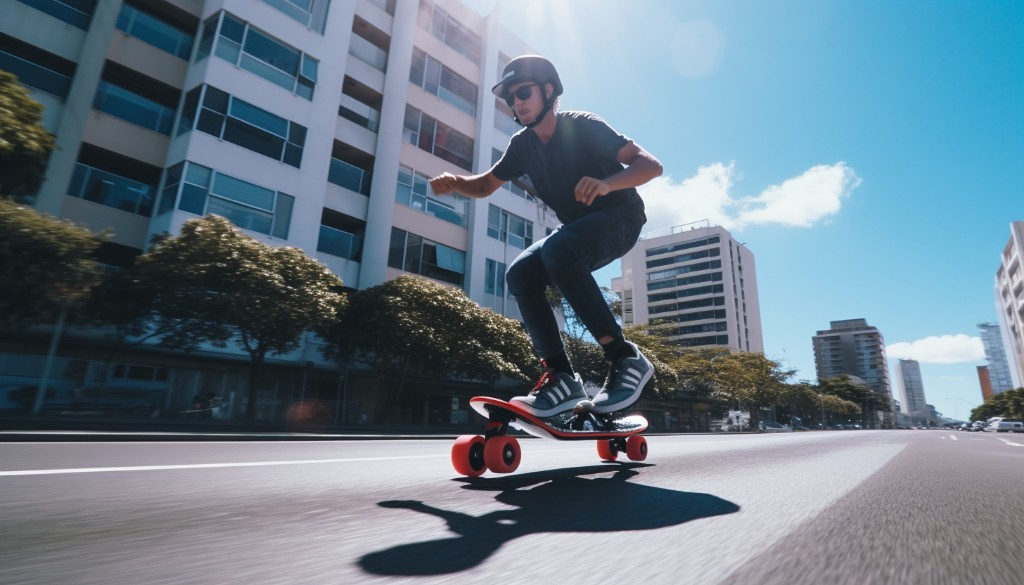
Maintaining Your Electric Skateboard for Safety
Speaking of riding an electric skateboard, let’s dive into one aspect that often gets overlooked – maintenance.
Regular upkeep of your electric skateboard isn’t just about ensuring smooth rides or prolonging the life of your board; it’s about safety too. The key areas to focus on for maintenance include wheels, bearings, grip tape, and more importantly – electric skateboard batteries. If any of these elements are ignored, they can result in flaws which may impact the performance of your board and potentially lead to accidents.
Battery Maintenance for Electric Skateboards
Battery health plays a critical role in the safety and performance of an electric skateboard. Regularly checking and maintaining your skateboard battery can extend the lifespan and prevent potential issues such as overheating or even fire hazards. Check your board regularly for any swelling or leaks, and cease use immediately if there are any issues. Some problems may be easily resolved, but ensure that you consult a professional for more complex issues to keep your board in prime (and safe) condition.

Importance of Rider Training and Practice
One of the key factors in preventing accidents while you ride your electric skateboard is investing time in training and practice. We often hear the phrase ‘practice makes perfect’, and it certainly rings true when it comes to training on a E-Skateboard.
The Role of Training
Efficient rider training involves getting to grips with the basics of how to control, balance, and maneuver your board. By spending time learning and honing these skills, you can significantly reduce your chances of accidents while you ride your electric board.
The Power of Practice
Once you’ve got the basics down from your initial training, it’s important not to rest on your laurels. This is where consistent practice comes into play. Repeatedly practicing your electric skateboarding skills not only cements what you’ve learned, but also helps grow your confidence and skill on the board.
Think about it like learning a musical instrument. You wouldn’t expect to master the guitar after just one lesson, would you? Similarly, it’s essential to consistently practice riding on your electric skateboard to become a proficient rider.
Remember, practice is not just about repetition, but also about challenging yourself and pushing your boundaries. Can you ride your electric skateboard safely at higher speeds? What about trying some beginner skateboarding tricks to level up your skills? Or perhaps there are some complex maneuvers or skateboarding stunts you’d like to master? With the power of practice, there’s always room for improvement, enabling you to exceed your skateboarding goals!

Navigating through Potential Hazards
Just as any road user has to be aware of potential hazards, so does an electric skateboarder. Being able to identify and navigate around obstacles is a valuable skill that can prevent you from getting involved in a crash.
Risk Assessment
Before embarking on a trip, it’s good practice to assess the route for potential risks. This could be anything from rough surfaces and potholes, to high-traffic areas and poor lighting conditions. Having an awareness of these hazards allows you to plan ahead and avoid them where possible.
For example, if you know there’s a particularly bumpy stretch of road on your route, you could choose to take an alternative path or slow down in that section to ensure your safety.
Obstacle Avoidance
However, not all hazards can be avoided. Sometimes they appear out of nowhere, forcing you to make split-second decisions. This is where obstacle avoidance skills come into play.
Being able to quickly steer away from an unexpected object or rapidly brake without falling are vital skills that can prevent accidents from happening. Like any other skill, these are honed through continuous practice and gaining experience on your board.
After all, electric skateboard accidents happen, but with appropriate risk assessment and obstacle avoidance skills, their frequency and severity can be significantly reduced.

Dealing with Emergencies: First Aid Knowledge and Contact Plans
Accidents do happen despite our best efforts at prevention. In such cases, being prepared can make a huge difference in the potential outcome. That’s why having a basic understanding of first aid and an emergency contact plan is critical when you ride your electric skateboard.
First Aid Knowledge
Skateboard accidents can lead to various common injuries, such as scrapes, bruises, sprains, and sadly even head injuries. Understanding how to treat these common injuries can be highly beneficial in emergency situations.
For instance, knowing how to properly clean a wound or how to apply a bandage can help prevent infections. And with head injuries being a possibility during accidents, understanding the basic steps like checking for consciousness and breathing, can literally save lives while waiting for professional medical assistance.
Emergency Contact Plan
Alongside first aid knowledge, it’s important to have an emergency contact plan in place. This means having key numbers at hand (like family members or friends who can come to your aid), knowing the location of nearest hospitals or clinics, and being able to provide precise location details if calling for emergency assistance.
Having such a plan not only ensures that help can be swiftly reached in case of an accident but also gives peace of mind while riding. So while we hope that common injuries are a rarity when you ride your electric skateboard, it always helps to be prepared just in case.
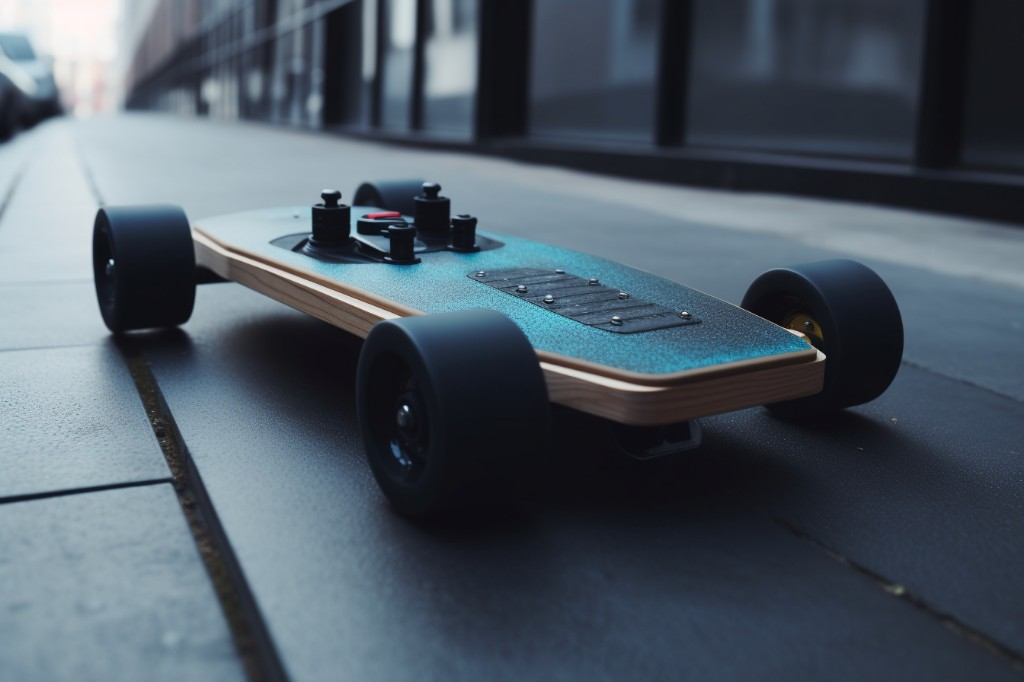
Understanding the Risks Related to Electric Skateboarding
When it comes to electric skateboarding, there are several risk factors to consider. One of the most concerning aspects is speed wobbles. This phenomenon occurs when the skateboard starts to oscillate around its axis, causing the rider to lose control and potentially fall.
The Danger of Speed Wobbles
Speed wobbles can be particularly dangerous when combined with high speeds, a common feature of electric skateboards. Not only can the sudden loss of control lead to severe injuries, but it also puts others in danger. One important factor to remember is that electric skateboards have a much higher top speed than traditional skateboards, making them more dangerous for both the riders and those around them.
Board Stability
The stability of an electric skateboard plays a significant role in preventing speed wobbles. A stable board reduces the risk of injury and provides a safer ride. Factors such as the skateboard deck material, length, wheelbase, and truck tightness all contribute to its stability and should be considered in the prevention of speed wobbles.
Speed wobble prevention strategies can also include rider techniques such as bending the knees, lowering the center of gravity, or gradually reducing speed. All of these skills can be mastered through the power of practice; the importance of which we’ve already covered.

Common Mistakes That Lead to Accidents
Despite your best efforts, accidents on an electric skateboard may still happen due to common mistakes by riders. Understanding what these are can help you to avoid them.
Distraction Avoidance
One of these mistakes is getting distracted while operating an electric skateboard. Being mindful and alert at all times while riding can prevent accidents caused by missing a pothole or not noticing an approaching pedestrian, for example.
Maintaining a Safe Stopping Distance
Another mistake is not maintaining a safe stopping distance from others. Electric skateboards can take a few feet to come to a complete stop, so ensuring a safe stopping distance is essential.
Correct Ride Height Adjustment
Incorrect ride height adjustment is a further common mistake when operating an electric skateboard. If your board is too high or too low, it can affect your balance and control, leading to falls or collisions. Regularly checking and adjusting your board’s ride height can minimize this risk.

Closing Thoughts
Electric skateboarding is an exhilarating and efficient mode of transport, but it comes with its own set of risks and responsibilities. Understanding the potential risks related to electric skateboarding should not be overlooked, and preventing serious injuries should be a rider’s utmost priority. Mastering the basics are the first step, but it’s only a stepping stone towards safety. Equipping oneself with the appropriate protective gear can significantly minimize the risk of injuries. As riders, adapting to safe riding conditions and surfaces is equally important as enhancing one’s visibility on the road. Adherence to traffic rules, safety laws, and maintaining the skateboard are non-negotiable aspects of staying safe while whizzing past the streets. Moreover, continuous rider training and practice go a long way in making one adept at navigating through potential hazards. So, whether you’re riding an electric skateboard for fun or commuting, wearing protective gear and adopting safe riding practices all play a significant role in reducing accidents and enhancing your overall skateboarding experience.
Frequently Asked Questions
What is the best protective gear for electric skateboarding?
The best protective gear for electric skateboarding includes a certified skateboard helmet, elbow pads, knee pads, ankle guards, and wrist guards. Depending on the speed and terrain, some riders may also choose to wear a back protector, padded shorts, jackets, or gloves for additional protection.
How can I practice safe stopping techniques on my electric skateboard?
Practicing safe stopping techniques begins with understanding your electric skateboard and its braking system. Start by practicing at slower speeds in a controlled environment. Gradually increase your speed as you become more comfortable. Always lean back when stopping to maintain balance and avoid sudden stops unless necessary.
How can I ensure my visibility while night riding on my electric skateboard?
To ensure visibility while night riding on your electric skateboard, equip your board with front and rear lights. Additionally, wearing reflective clothing or accessories can make you more noticeable to motorists on the road.
How frequently should I maintain my electric skateboard for safety?
Your electric skateboard should be maintained regularly for safety. A routine check-up every month is advisable, but this could vary depending on how often and under what conditions you ride. Key areas to examine include the wheels, bearings, trucks, and battery.
What are the common mistakes that lead to accidents while riding an electric skateboard?
Common mistakes that lead to accidents while riding an electric skateboard include speeding, ignoring traffic rules, not wearing appropriate protective gear, poor maintenance of the skateboard, and riding under poor lighting conditions or on unsuitable surfaces. Being aware of these can help prevent accidents.
